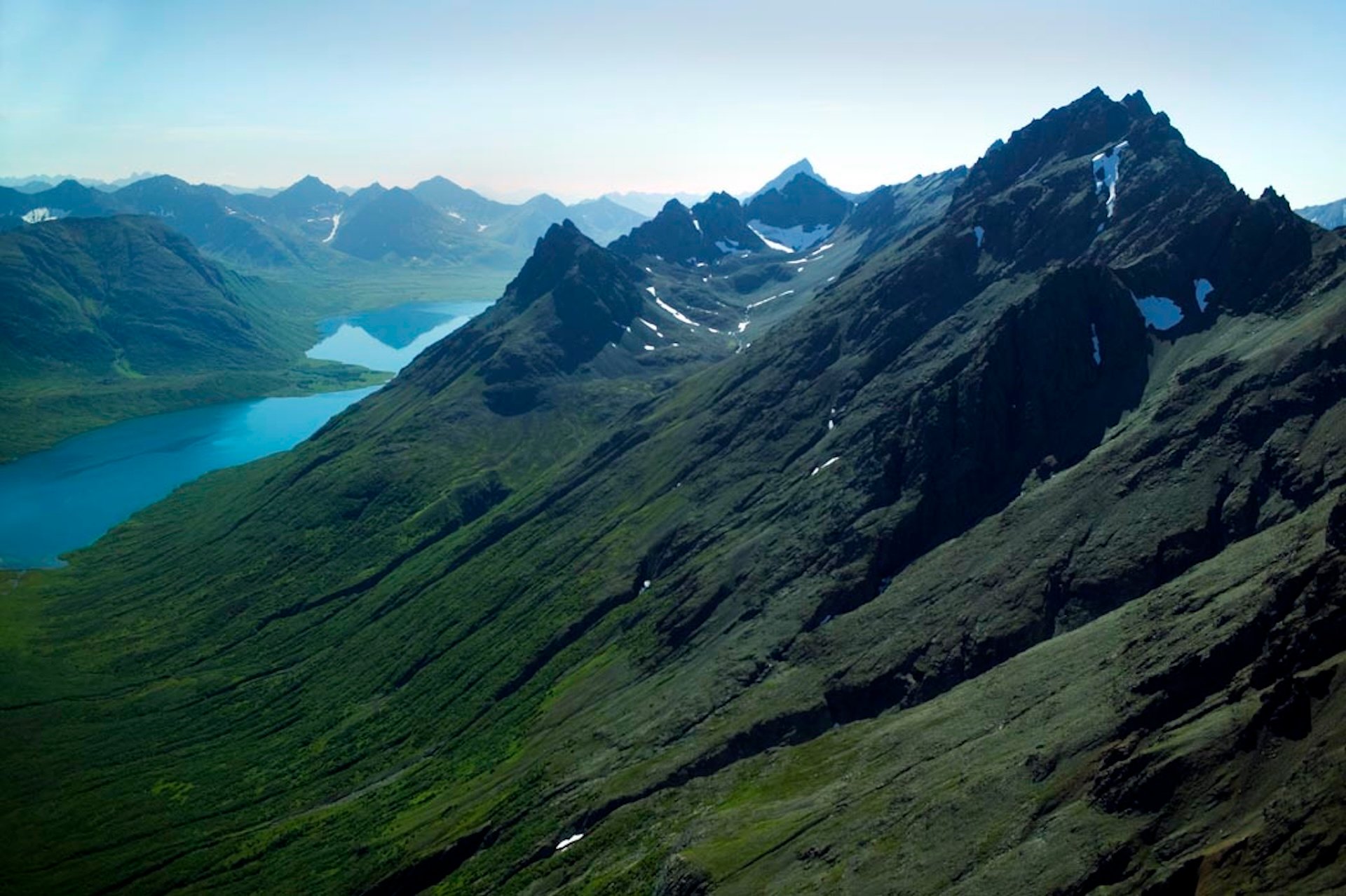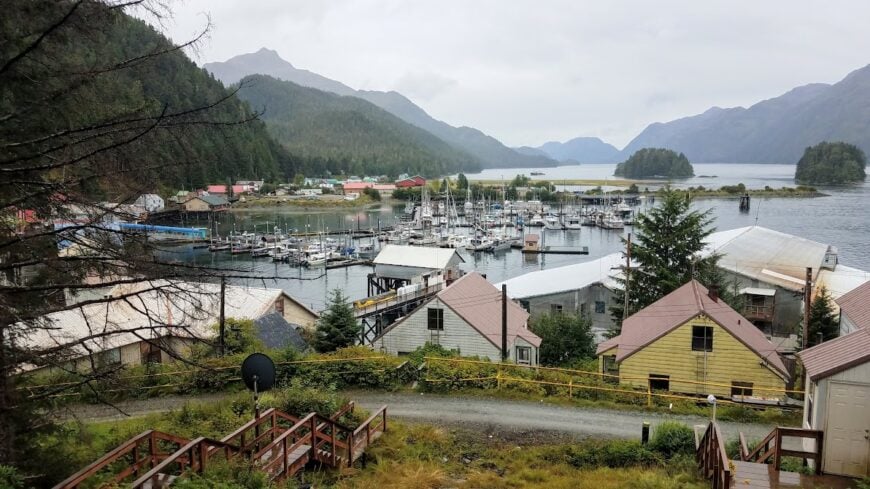
If you’re looking to escape the hustle and bustle of modern life, Southeast Alaska offers some of the most secluded and enchanting towns I’ve ever visited. Nestled among towering mountains and pristine waterways, these hidden gems provide a perfect retreat into nature’s untouched beauty.
From the quiet boardwalks of Pelican to the vibrant indigenous culture of Hydaburg, each town has its own unique charm that beckons adventurers and tranquility seekers alike.
Join me as I count down ten of my favorite secluded towns in this breathtaking region, where solitude and serenity await around every corner.
10. Hyder: The Alaskan Town Beyond the Road’s End
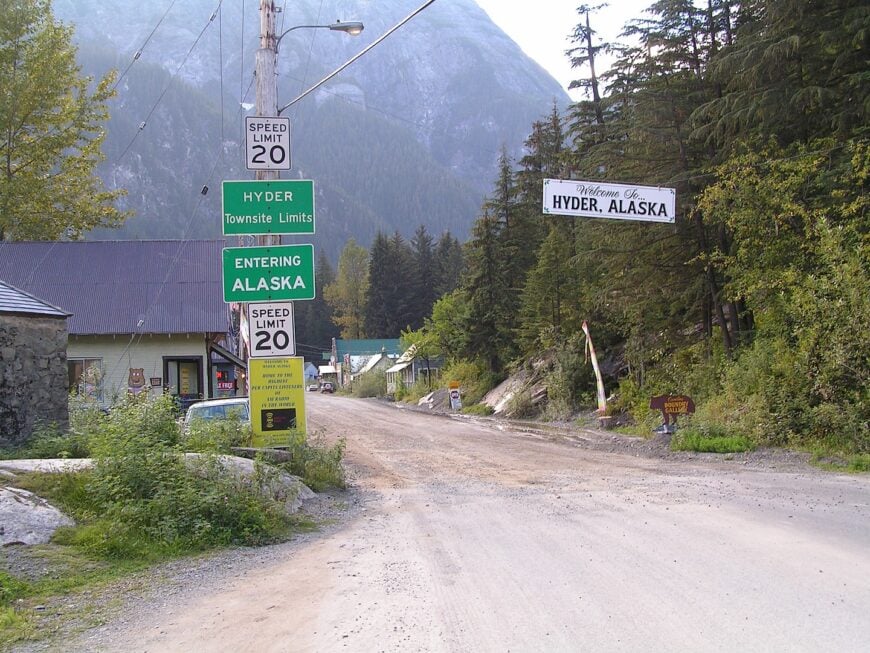
Hyder is a tiny town with a population of about 80 people, making it one of the most secluded spots I’ve found in Southeast Alaska. Known for its incredible access to glaciers and wildlife, it’s a haven for adventurous souls seeking close encounters with nature.
The main activities here include bear watching at the Fish Creek Wildlife Observation Site and exploring the breathtaking Salmon Glacier, one of the largest road-accessible glaciers in the world.
Hyder’s economy primarily revolves around tourism and some cross-border trade with neighboring Stewart, British Columbia.
What makes Hyder truly secluded is its isolation from the rest of Alaska; there’s no road connection to other Alaskan communities, and its remote location provides a sense of being at the end of the world.
Where is Hyder?
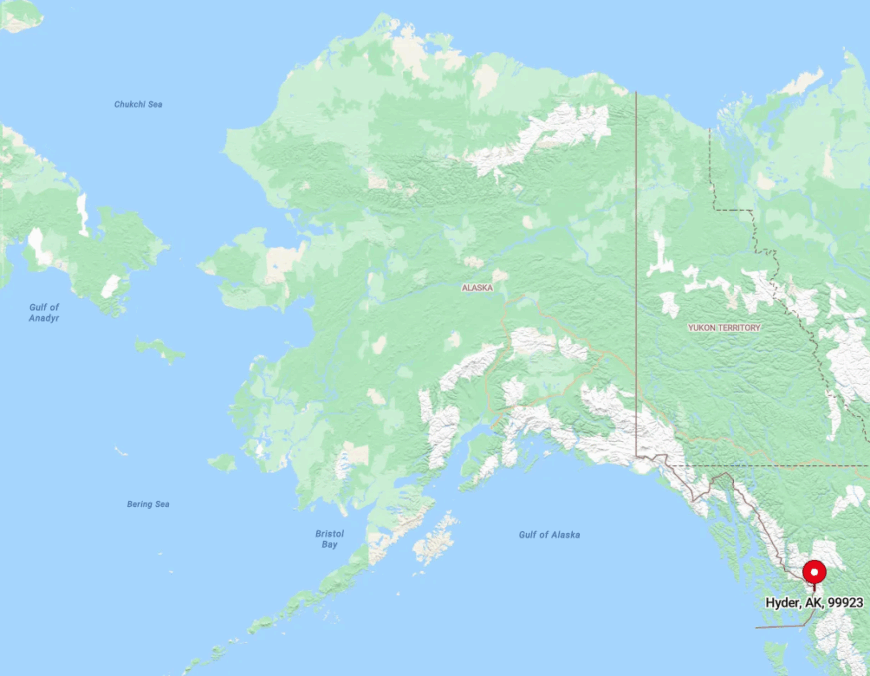
Hyder is tucked away at the southeastern edge of Alaska’s Panhandle, right on the border with Canada. In fact, it’s the only place in Alaska where you can drive directly from Canada, but to reach other parts of Alaska from Hyder, you’d need to travel through Canada again.
Its seclusion is heightened by the surrounding rugged mountains and dense forests, which isolate it from other towns.
To get there, I usually drive through British Columbia via the Cassiar Highway and then take the Stewart-Hyder Access Road, a journey that feels like venturing into the wild unknown. The remote location and challenging access make Hyder a true escape from the ordinary.
9. Hydaburg: Explore the Heart of Haida Culture
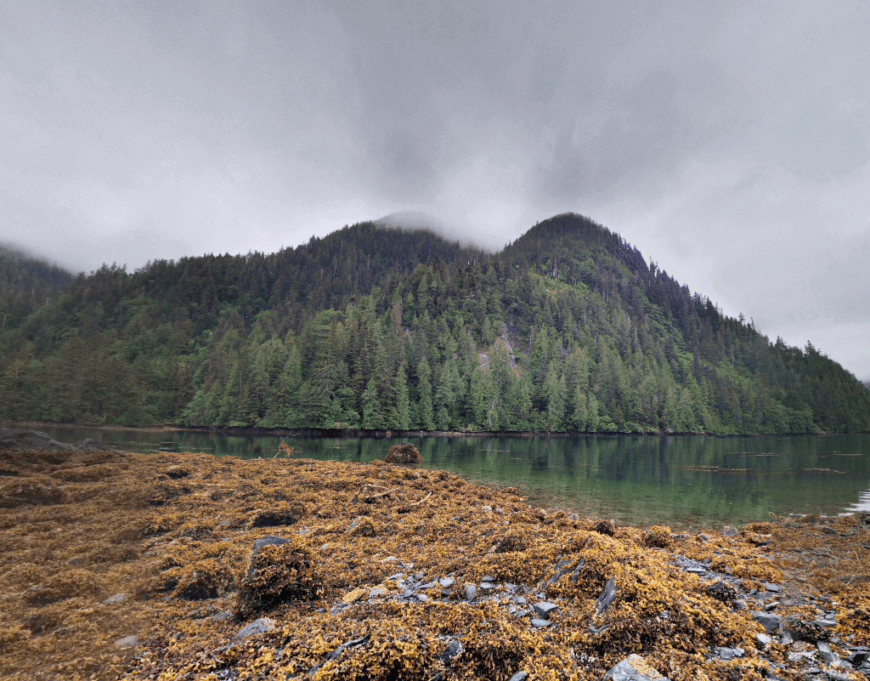
Hydaburg is a small town with approximately 380 residents, offering an intimate glimpse into the rich Haida heritage. I love visiting Hydaburg for its vibrant display of traditional totem poles and the annual culture camp that celebrates indigenous art, dance, and storytelling.
The main industries here are fishing and timber, but there’s a growing focus on cultural tourism that allows visitors to immerse themselves in Haida traditions.
What makes Hydaburg secluded is its location amidst breathtaking natural beauty, surrounded by dense rainforests and the vast waters of the Inside Passage, far from the usual tourist routes.
Where is Hydaburg?
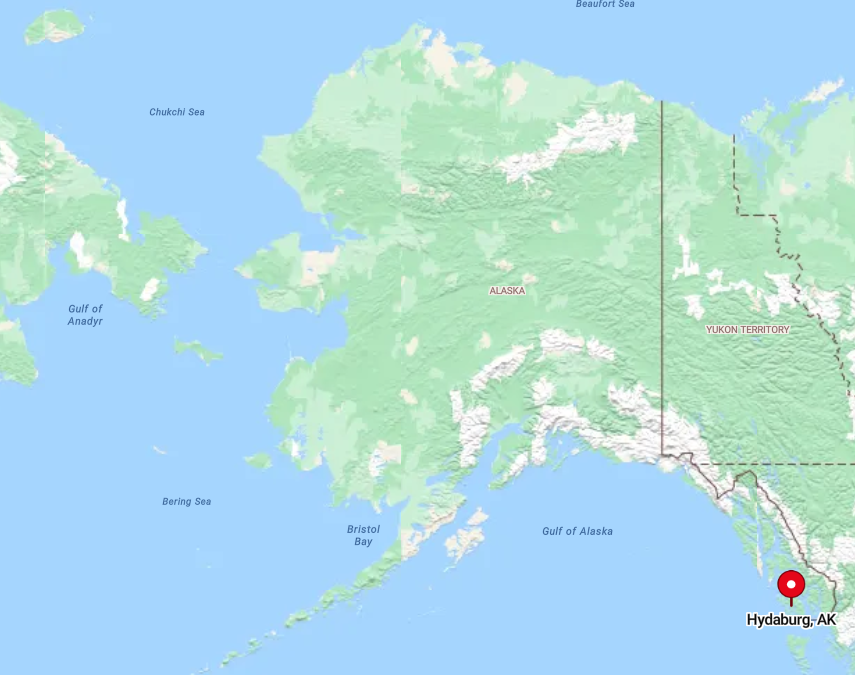
Situated on the southwest coast of Prince of Wales Island in Southeast Alaska, Hydaburg is accessible primarily by boat or floatplane. Its seclusion stems from the remote island setting, with limited road connections to other small communities and none to the mainland.
To reach Hydaburg, I typically take a ferry to Prince of Wales Island and then drive through the winding roads that cut across the lush landscape, or fly in directly for a quicker journey. The town’s off-the-beaten-path location ensures a peaceful environment where the rhythms of nature and culture harmoniously intertwine.
8. Coffman Cove: A Hidden Retreat on Prince of Wales Island
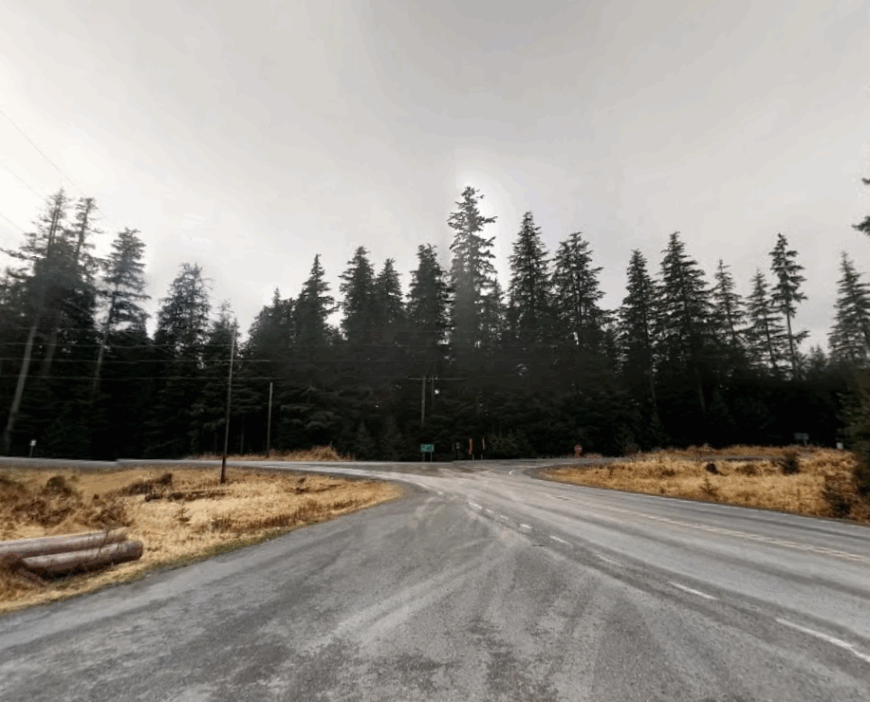
Coffman Cove is a charming seaside village with a population of around 200 people, offering a serene environment that’s perfect for unwinding. I often find myself drawn to its excellent fishing opportunities, kayaking along the sheltered coves, and hiking through the surrounding Tongass National Forest.
The community thrives on fishing and small-scale tourism, with locals welcoming visitors who appreciate the tranquility of remote living. Coffman Cove’s seclusion is due to its location on the northeastern side of Prince of Wales Island, away from major urban centers and surrounded by untouched wilderness.
Where is Coffman Cove?
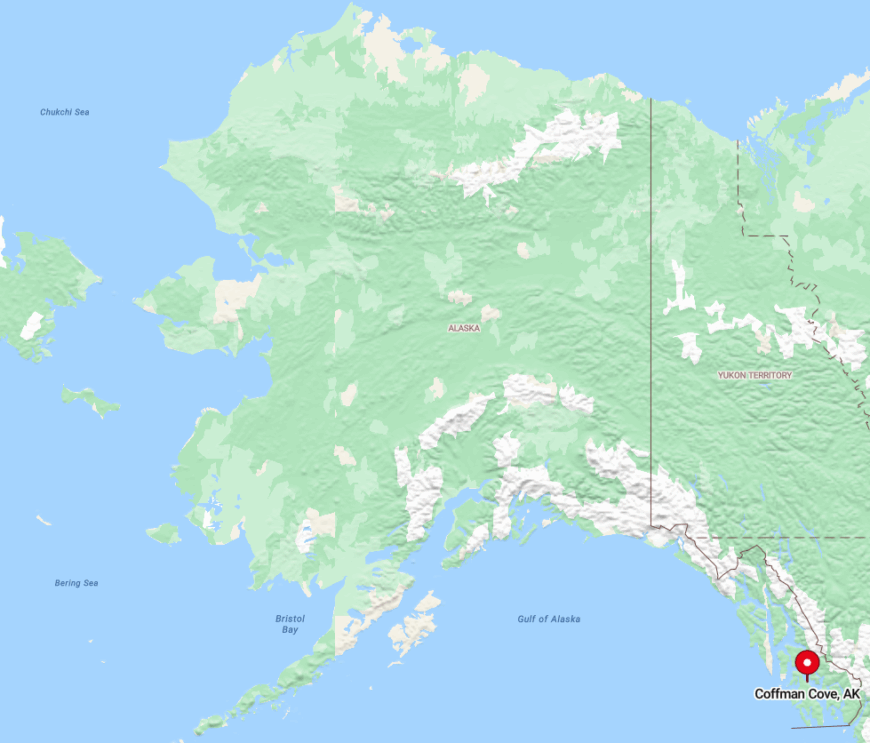
Located on Prince of Wales Island in Southeast Alaska, Coffman Cove is nestled along the Inside Passage, accessible by ferry or floatplane. Its secluded character is enhanced by the limited transportation options and the vast stretches of forest that separate it from other towns.
To get there, I usually take the Alaska Marine Highway ferry system to the island and then enjoy a scenic drive through the rugged landscape, which adds to the sense of adventure. Coffman Cove’s hidden position makes it a peaceful retreat away from the crowds, ideal for those seeking solace in nature.
7. Port Alexander: Disconnect in Alaskan Wilderness
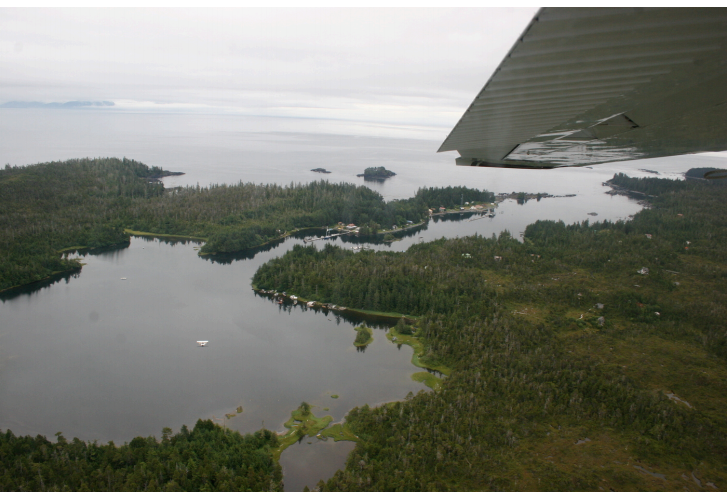
Port Alexander is a remote town with a population hovering around 50 residents, offering an ideal spot to disconnect from modern distractions. The town is known for its pristine fishing waters, with activities like salmon and halibut fishing being the main draw for me and other visitors.
The local economy is centered around commercial fishing and subsistence living, reflecting a lifestyle deeply connected to the sea.
Port Alexander’s seclusion is amplified by its lack of road connections and reliance on boat or floatplane access, nestled on the southern tip of Baranof Island amid the vast Alaskan wilderness.
Where is Port Alexander?

Situated on Baranof Island in Southeast Alaska, Port Alexander lies at the edge of the Pacific Ocean, far from the region’s more populated areas. Its secluded nature is due to the rugged terrain and the absence of roads connecting it to other communities.
To reach Port Alexander, I typically take a floatplane from Sitka, soaring over breathtaking landscapes before landing in the calm harbor. The isolation provided by the surrounding forests and sea makes Port Alexander a perfect haven for those wanting to immerse themselves in nature’s solitude.
6. Kake: Witness Age-Old Traditions in Secluded Serenity

Kake is a traditional Tlingit village with about 600 inhabitants, offering a peaceful setting steeped in indigenous culture. I always find the world’s tallest totem pole, standing at 132 feet, to be a captivating symbol of the town’s rich heritage.
The main industries here include commercial fishing and carving, with locals deeply connected to their ancestral traditions.
Kake’s seclusion comes from its location on Kupreanof Island, surrounded by the Tongass National Forest and accessible only by air or sea, which preserves its serene and untouched environment.
Where is Kake?
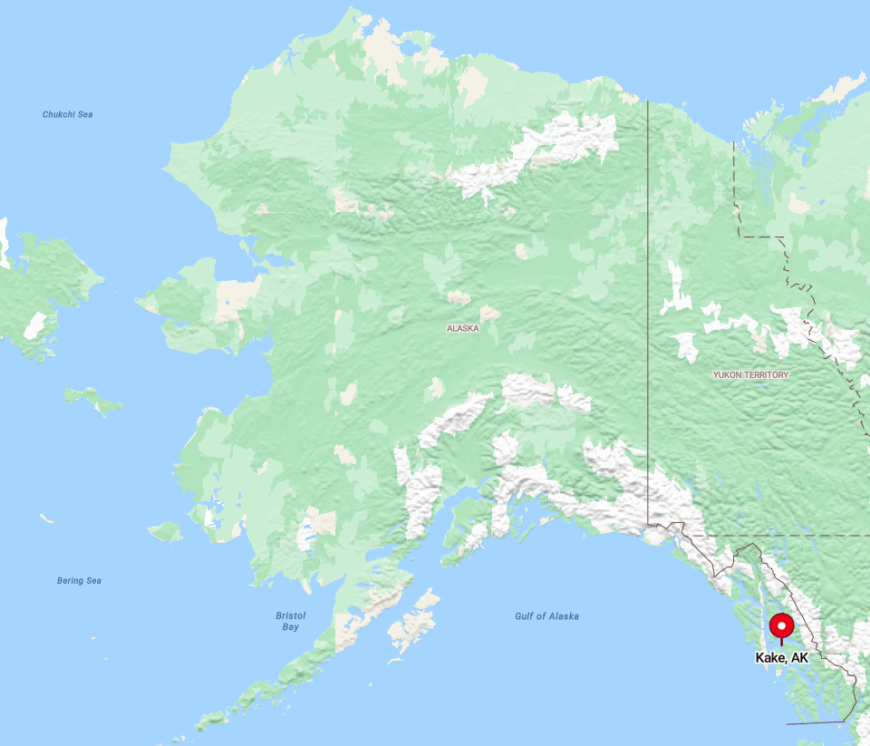
Located on the northwest shore of Kupreanof Island, Kake sits along the shores of Frederick Sound in Southeast Alaska. Its remote setting is intensified by the thick forests and mountainous terrain that isolate it from other communities.
To visit Kake, I usually travel by ferry or take a small plane from Juneau or Petersburg, enjoying the scenic journey over waterways and forests. The town’s distant location ensures a tranquil atmosphere where one can experience age-old traditions amid the beauty of the Alaskan wilderness.
5. Angoon: A Tlingit Village Embraced by Nature
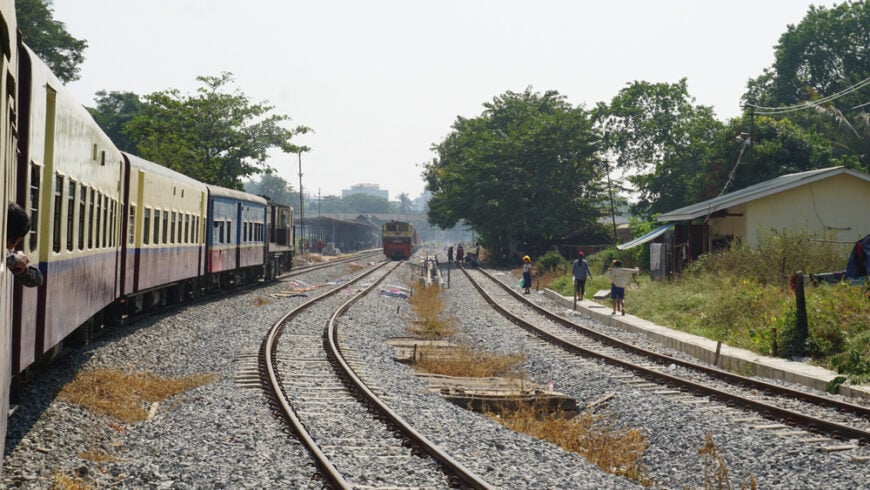
Angoon is home to around 450 residents and is the only permanent settlement on Admiralty Island, known for its dense brown bear population and pristine landscapes. I appreciate the town’s strong Tlingit culture, evident in community events and local artistry.
Fishing and subsistence activities form the backbone of Angoon’s economy, with residents deeply connected to the land and sea. The town’s seclusion is due to its island location and lack of road connections, surrounded by the vast Kootznoowoo Wilderness area, making it a peaceful retreat infused with cultural richness.
Where is Angoon?
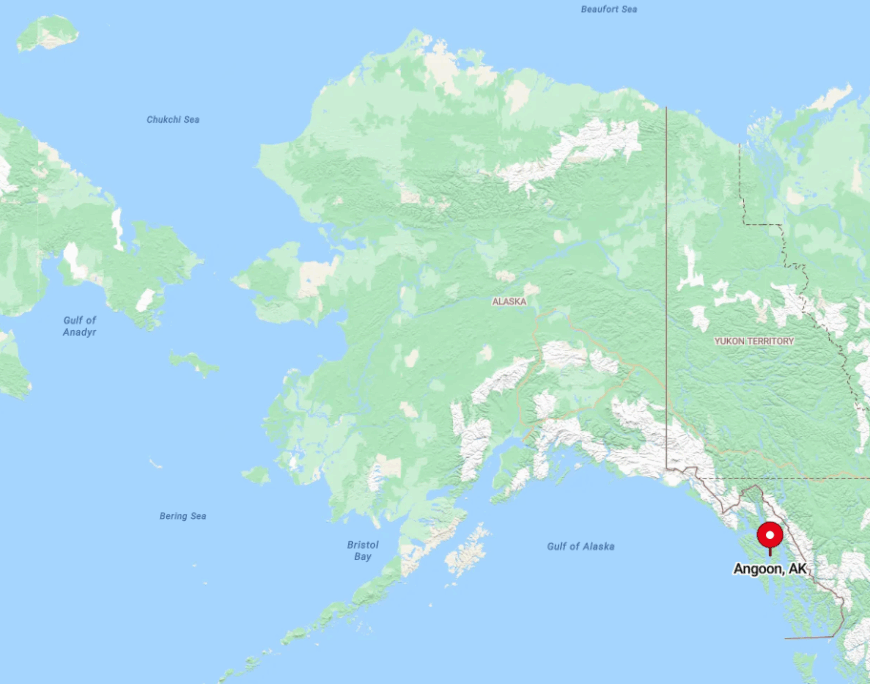
Nestled on the west side of Admiralty Island in Southeast Alaska, Angoon overlooks Chatham Strait and is accessible only by boat or floatplane. Its secluded nature is heightened by the island’s rugged terrain and the surrounding protected wilderness areas.
When I visit Angoon, I often take a floatplane from Juneau, flying over the stunning Inside Passage and catching glimpses of whales and bears below. The town’s isolation provides a unique opportunity to disconnect and experience the profound tranquility of its natural surroundings.
4. Tenakee Springs: Relaxation in Natural Hot Springs Paradise
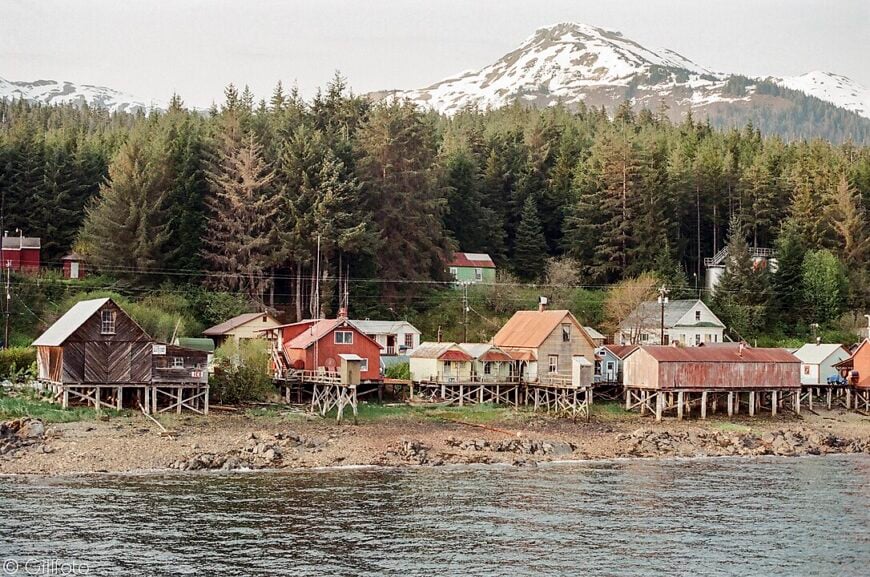
Tenakee Springs is a quaint town of about 100 people, renowned for its natural hot springs that offer a soothing escape. I enjoy the slow-paced lifestyle here, with no cars and only a single main street lined with charming homes and shops.
Residents and visitors alike relish activities such as soaking in the communal bathhouse, hiking local trails, and berry picking in season. The main industries are fishing and small-scale tourism, with the town’s seclusion maintained by its remote location and traditional way of life.
Where is Tenakee Springs?
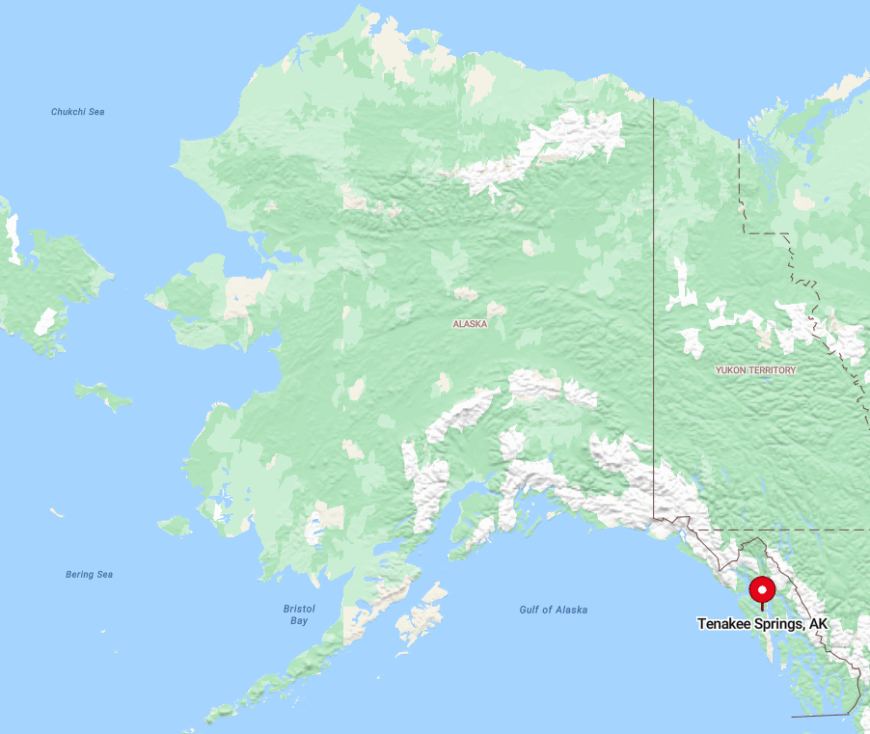
Situated on the eastern shore of Chichagof Island along Tenakee Inlet, Tenakee Springs is accessible only by boat or floatplane. Its seclusion stems from the surrounding dense forests and mountains, as well as the absence of roads connecting it to other communities.
I typically reach Tenakee Springs by ferry from Juneau or Sitka, enjoying the scenic voyage through the Inside Passage. The town’s isolation and natural hot springs make it a perfect destination for those seeking relaxation and a break from the modern world.
3. Elfin Cove: Where Roads End and Adventure Begins
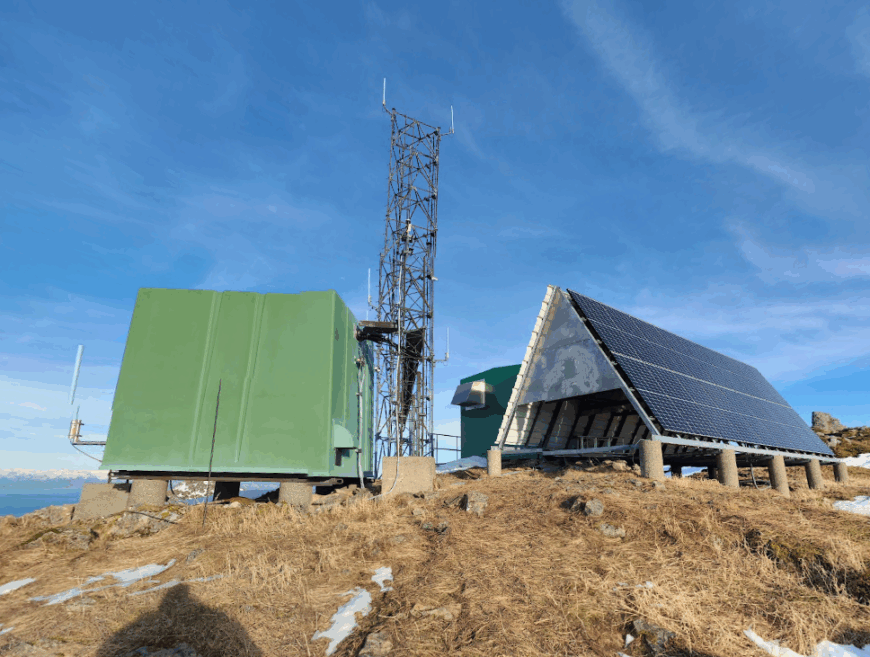
Elfin Cove is a tiny, car-free community with a population of around 20 full-time residents, offering a unique charm with its picturesque boardwalks and peaceful harbor. I find it delightful to stroll along the wooden walkways, visit the local artist galleries, and engage in world-class fishing and kayaking.
The main industry is commercial fishing, with tourism playing a supporting role during the summer months. Elfin Cove’s seclusion is enhanced by its location on Chichagof Island, surrounded by the wild beauty of the Gulf of Alaska and only accessible by boat or floatplane.
Where is Elfin Cove?

Located on the northwest coast of Chichagof Island, Elfin Cove sits near Cross Sound in Southeast Alaska. Its secluded nature is due to the lack of roads and the rugged terrain that isolates it from other settlements.
To get to Elfin Cove, I usually take a floatplane from Juneau, flying over dramatic seascapes and mountainous islands. The remote setting, accessible only by air or sea, creates a tranquil environment where adventure and serenity coexist.
2. Pelican: The Remote Boardwalk Village by the Sea
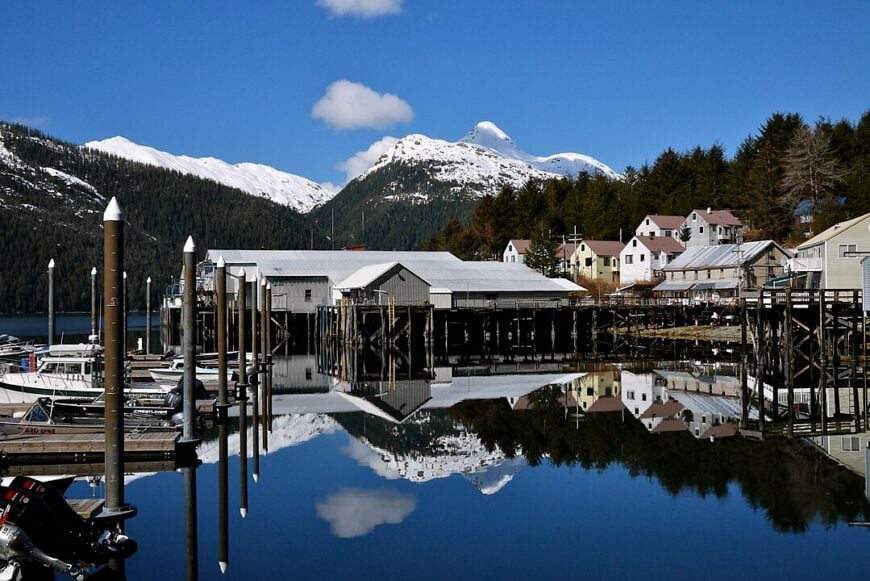
Pelican is a quaint fishing village with about 70 residents, offering tranquility amid stunning coastal scenery. The town is unique for its boardwalk streets, where I enjoy leisurely walks while taking in the panoramic ocean views. Fishing is the lifeblood of Pelican, with a historic cold storage facility symbolizing its heritage.
Recreational fishing and wildlife viewing are popular activities, drawing visitors who appreciate the peaceful atmosphere. Pelican’s seclusion is due to its location on Lisianski Inlet, accessible only by boat or floatplane, far removed from urban distractions.
Where is Pelican?
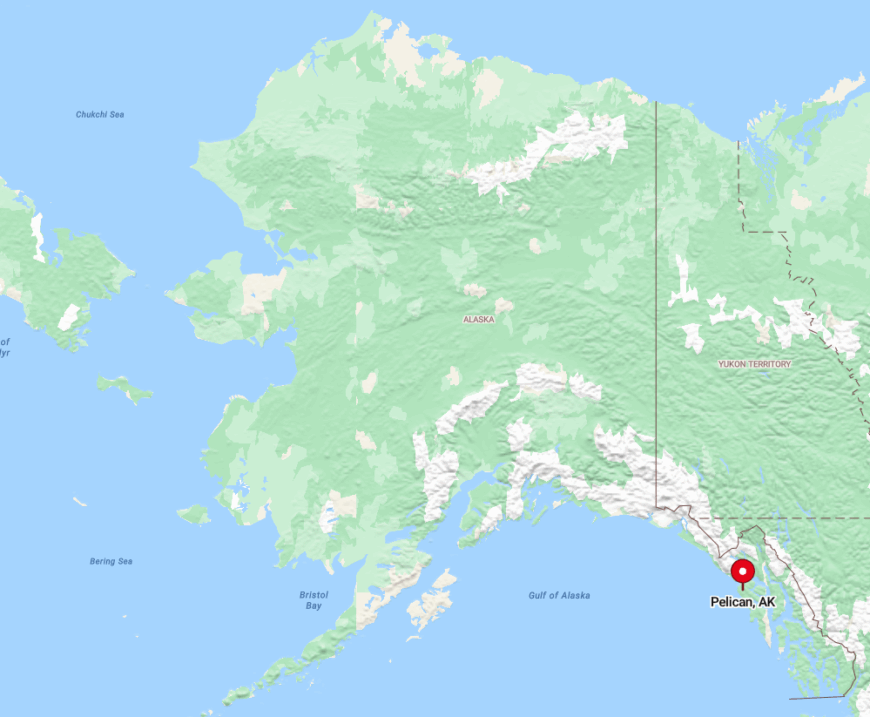
Sitting on the northwest coast of Chichagof Island in Southeast Alaska, Pelican is nestled along Lisianski Inlet. Its isolation is magnified by the surrounding rugged terrain and the lack of roads connecting it to other communities.
I usually reach Pelican by ferry or floatplane from Juneau, enjoying the journey through the scenic waters of the Inside Passage. The remote location and serene environment make Pelican a hidden treasure for those seeking a quiet retreat by the sea.
1. Gustavus: Gateway to Glacier Bay’s Untouched Beauty
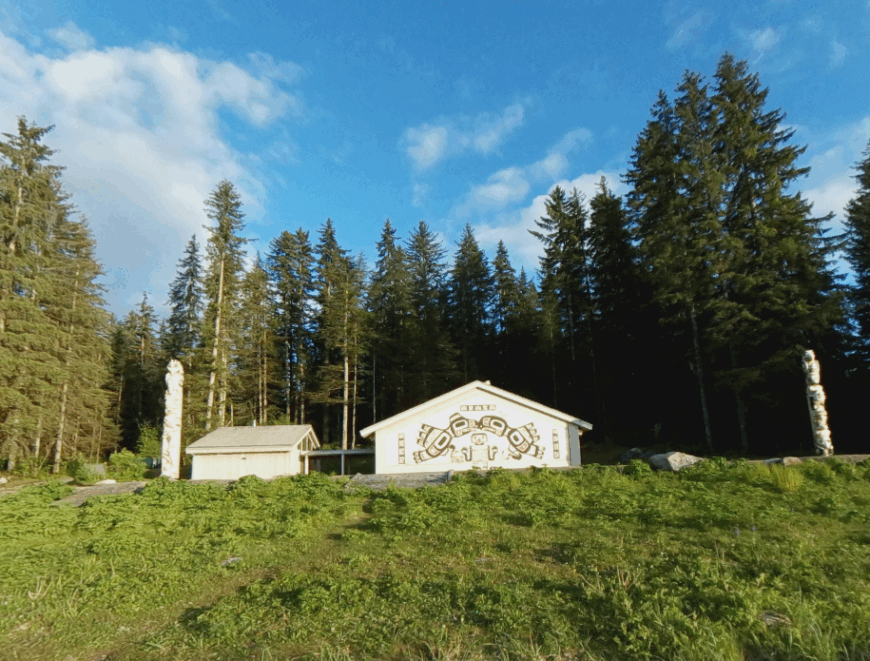
Gustavus is a small community of around 450 people, serving as the gateway to Glacier Bay National Park. I find it to be a serene place surrounded by majestic mountains, glaciers, and abundant wildlife.
Outdoor activities abound, including kayaking with humpback whales, hiking through wildflower meadows, and birdwatching among diverse species.
The main industries are tourism and fishing, with the town providing access to some of Alaska’s most pristine natural wonders. Gustavus’s seclusion comes from its remote location at the mouth of Glacier Bay, offering an untouched beauty that’s hard to find elsewhere.
Where is Gustavus?
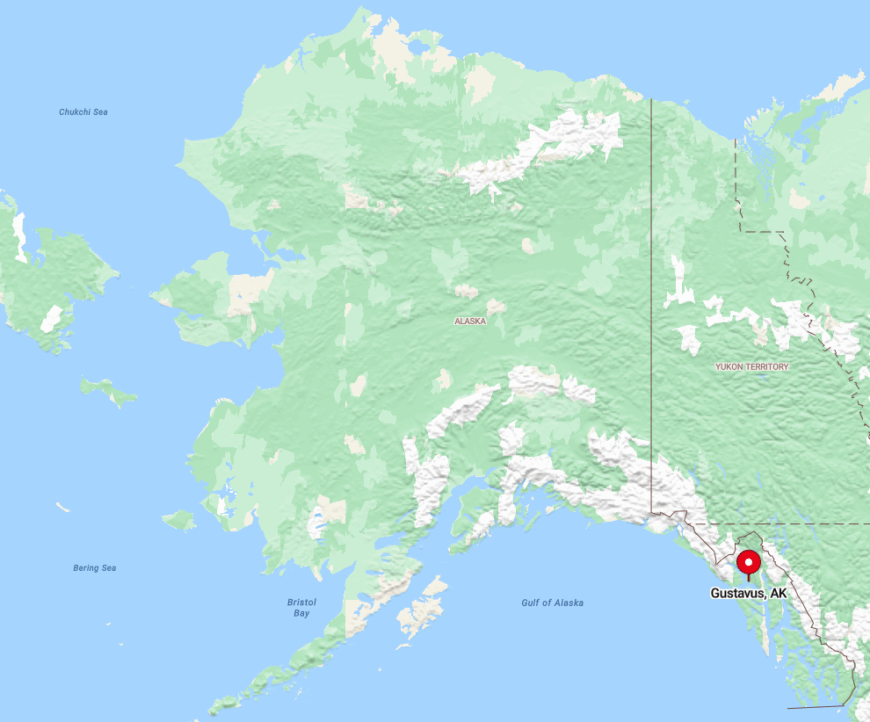
Located at the northern end of the Alaskan Panhandle, Gustavus sits at the entrance of Glacier Bay, accessible primarily by air or sea. Its secluded nature is a result of the surrounding wilderness and the lack of road connections to other towns.
To get there, I often fly from Juneau on a small plane, admiring the sweeping views of glaciers and temperate rainforests below. The town’s proximity to Glacier Bay National Park and its tranquil setting make Gustavus a perfect culmination to our journey through Southeast Alaska’s secluded towns.


